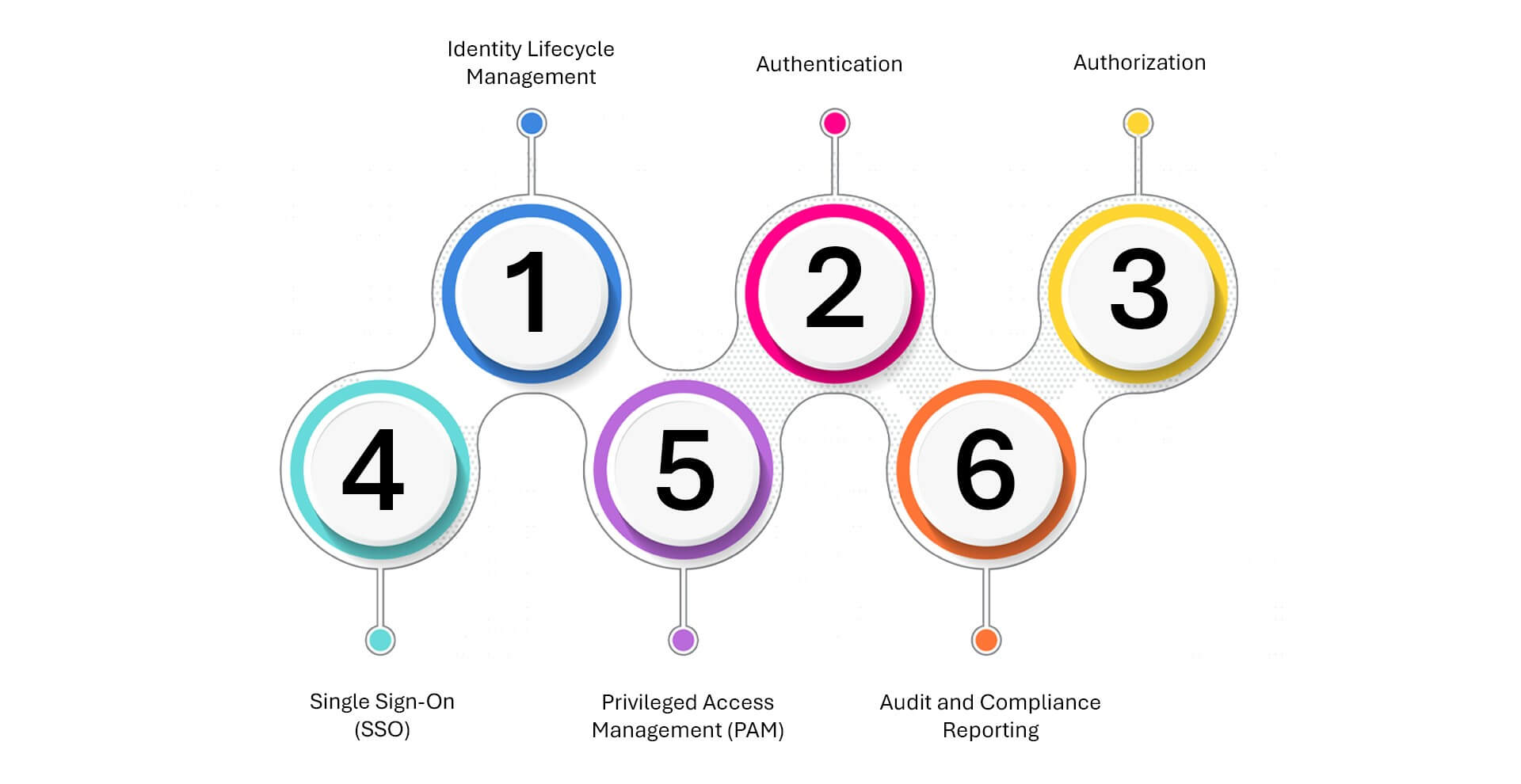What is Identity Management?
Identity Management is the process of managing and controlling user identities and access to digital resources within an organization. It involves the creation, maintenance, and deletion of user accounts, as well as the assignment and enforcement of access rights and permissions. Identity management ensures that the right individuals have the appropriate level of access to resources, enhancing security, compliance, and efficiency in managing user identities across various systems and applications.
At its core, identity management governs how digital identities are created, authenticated, authorized, and maintained across systems. It’s a critical component of security, compliance, and operational efficiency in today’s digital-first, cloud-driven, and hybrid work environments.
Why Identity Management Matters
As enterprises embrace cloud services, remote work, and interconnected ecosystems, the attack surface has expanded significantly. A single compromised identity—whether it belongs to an employee, contractor, or application—can be the gateway to major breaches.
According to IBM, 80% of data breaches are linked to weak or stolen credentials. Identity management reduces this risk by ensuring users only have access to what they need, when they need it, and nothing more. It also plays a central role in regulatory compliance by enabling organizations to audit, enforce, and prove access controls.
Modern identity management is not just about security—it’s about trust, productivity, and governance. It’s the foundation of a Zero Trust strategy and a prerequisite for safe digital transformation.
Key Components of Identity Management

- Identity Lifecycle Management: Automates the creation, modification, and removal of user identities across systems.
- Authentication: Verifies users are who they claim to be, using methods like passwords, biometrics, and multi-factor authentication (MFA).
- Authorization: Grants access rights to users based on roles, policies, or attributes (Role-Based Access Control or Attribute-Based Access Control).
- Single Sign-On (SSO): Enables users to log in once and access multiple systems without re-authenticating.
- Privileged Access Management (PAM): Provides extra control and monitoring for users with elevated permissions.
- Audit and Compliance Reporting: Tracks who accessed what and when, ensuring visibility and traceability.
Challenges in Identity Management

- Identity Sprawl Across Cloud and Hybrid Environments: As enterprises adopt more SaaS platforms and cloud services, managing identities across disparate systems becomes increasingly complex and error-prone.
- Shadow Access and Over Privileged Users: Without continuous monitoring, users often accumulate access rights over time, leading to security risks, compliance violations, and potential insider threats.
- Evolving Threat Landscape: Phishing attacks, credential stuffing, and session hijacking continue to exploit weak authentication practices and legacy systems.
- User Experience vs. Security Trade-offs: Balancing strict access controls with seamless user experience is a constant challenge, especially in customer-facing or distributed workforce environments.
- Regulatory Pressure: Laws like GDPR, HIPAA, and India’s DPDP Act require demonstrable access governance, timely deprovisioning, and incident traceability—all of which demand robust identity management.
Why Identity is the New Digital Perimeter
In today’s hyper connected enterprise, identity is no longer just a security checkpoint—it’s the new control plane. As the boundaries of corporate networks dissolve with the rise of hybrid work, SaaS sprawl, and multi-cloud ecosystems, Identity and Access Management (IAM) has become central to modern cybersecurity, data governance, and digital trust.
The Zero Trust model—“never trust, always verify”—puts identity at the core of access decisions. Every request, whether from a human, device, or API, is validated dynamically based on context, behavior, and risk. It’s no longer about static credentials, but about real-time assurance: who’s accessing what, from where, and why.
Meanwhile, AI is reshaping IAM from a reactive gatekeeper into a predictive engine. By analyzing behavioral patterns and access histories, AI-driven identity platforms can flag anomalies, automate deprovisioning, and adapt privileges on the fly—ensuring faster response to threats and tighter control over sensitive assets.
But identity’s role extends beyond security. It’s now a driver of digital trust. Customers expect seamless experiences that don’t compromise privacy. Employees want secure, frictionless access. Identity management delivers both—building the confidence needed to scale digital initiatives responsibly.
For forward-thinking enterprises, identity is no longer a backend function. It’s a strategic differentiator, shaping how organizations govern access, reduce risk, and enable innovation in an era where trust is everything.
In a world where every user is a potential entry point, identity management is not just a security measure—it’s a strategic asset. From enabling Zero Trust and securing hybrid work to ensuring compliance and enhancing digital trust, IAM is central to modern enterprise resilience.
Forward-looking organizations are moving beyond static identity controls to embrace dynamic, AI-enhanced, and context-aware identity management frameworks. Because in the future of digital business, who gets access, and how quickly you know if they shouldn’t can define success or failure.
Getting Started with Data Dynamics:
- Learn about Unstructured Data Management
- Schedule a demo with our team
- Read the latest blog: Data Sovereignty Is No Longer a Policy Debate. It’s the New Rulebook for Digital Governance






